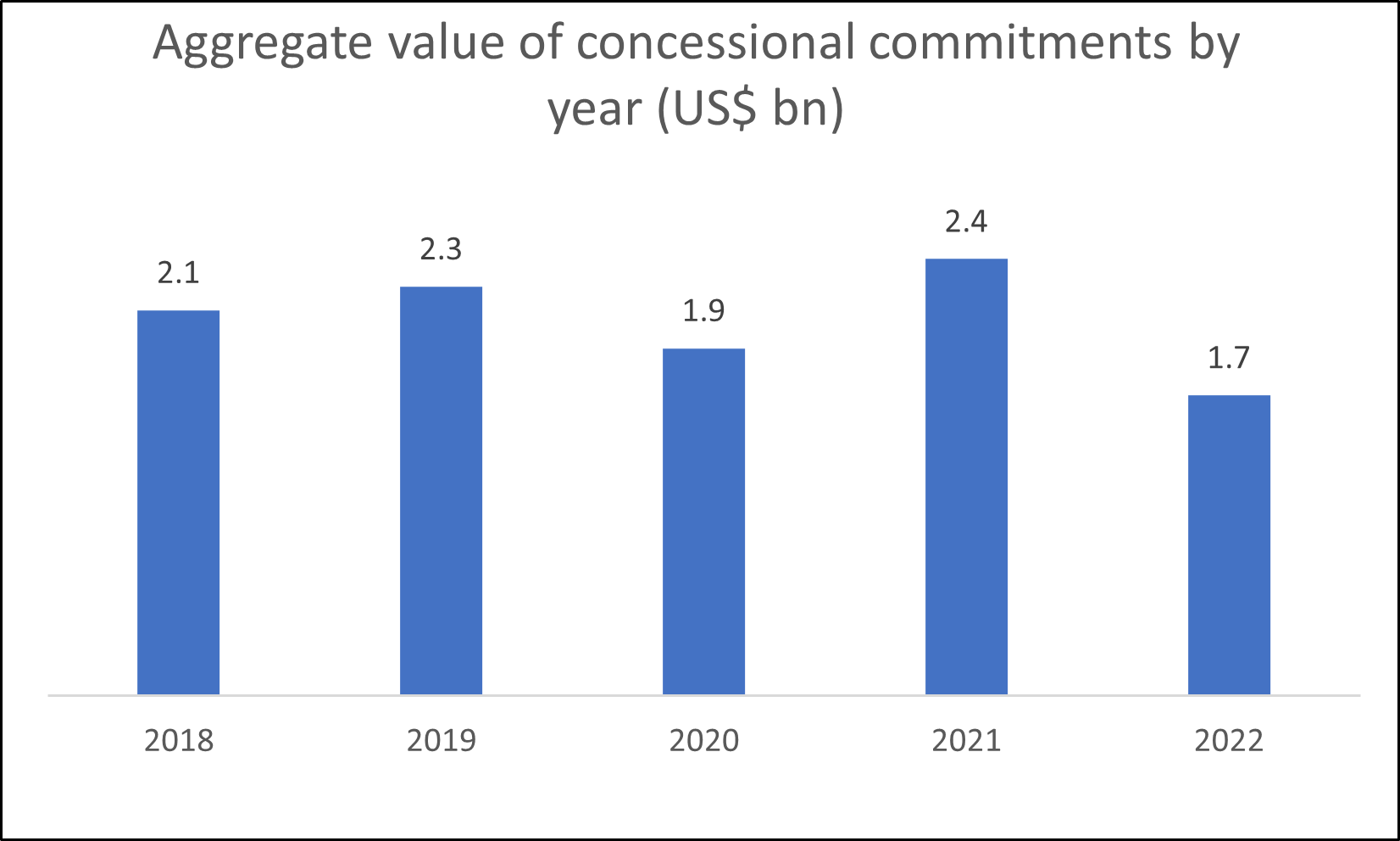
Is blended finance reaching a hard capital limit?
Blended finance is impossible to scale without increasing the availability of public and philanthropic sources of concessionary capital
While blended finance is often touted as a solution to the nature and climate finance gap, the amount of concessionary capital actually available for such deals has remained static in the last five years, according to data given to this publication by Convergence, the world’s largest blended finance database.
____________________________________________________________________________
Indeed, last year was actually the worst of the last five years, even though emerging markets – for which blended finance is designed – took centre stage at COP27.
Concessionary capital, which typically comes from public or philanthropic sources, plays a key “catalysing role” in blended finance deals, usually by absorbing first losses or providing certain guarantees or grants and thereby reducing risk for private investors.
Unless more concessionary capital becomes available, the market can’t grow.

Investing green capital in emerging markets has never been more urgent. In 2020, total global climate finance reached $653 billion, far below the estimated need of at least $4.3 trillion in annual finance flows by 2030 to avoid the worst impacts of climate change. Developing and emerging economies still receive less than a quarter of the total global climate investment despite being disproportionately affected by the climate crisis.
“We often hear that blended finance needs to be scaled up, but the truth is, there isn’t enough concessionary capital,” said Jennifer Pryce, president and CEO of Calvert Impact. “You can’t just create bigger and bigger vehicles without a corresponding increase in donor support.”
Rising interest rates have also negatively impacted blended finance, the main purpose of which is to reduce borrowing costs for developing countries, Pryce added.
System change
Aware of the concessionary capital limitations, Pryce said blended finance is “less about a definitive solution to the climate and nature finance gap” than demonstrating “investability” and calling for “system change through changing legislation and re-orienting the global financial system to make emerging markets more investable”.
“The reality is, we’re in a broken moment, right now,” she added. “I don’t think there’s ever going to be enough concessionary capital to scale blended finance to the extent so desperately needed. Private capital needs to be guided to do the right thing and that requires policy change.”
Cautious optimism
Due to the “high levels of momentum” in blended finance, Dr Stephanie Bilo, chief client & investment solutions officer at responsAbility, believed more concessionary capital would be deployed in the near future. “If more investors are calling for this, then that puts more pressure on the government to deliver,” she said.
Currently, only 1% to 3% of public development fund money is made available to blended finance transactions, according to data from Convergence. That means, with the right kind of political willingness, there is a potential for more public money to be allocated to blended finance.
Convergence’s Andrew Apampa said part of the problem is that the donor community tends to “lack a private sector mobilisation strategy”. For this reason, Convergence has set up an advisory programme to educate donors about blended finance and encourage them to mobilise more private capital.
Structural limitations
In addition to the limited availability of concessionary capital, the blended finance market is still in an experimental “stage” in which practitioners are still working out the kinds of pathways and programmes that can deliver scale, Alejandro Litovsky, CEO of Earth Security, told Net Zero Investor.
From blue bonds to climate agriculture funds, shifting into a “scaling up stage” requires “better data, strategies, streamlined policy systems that are strong on measuring and reporting impact, and awareness of opportunities”.
Having more dedicated blended finance “brokers” to connect capital and projects and facilitate a pipeline of deals is another key part of the scaling challenge. “We need to bridge the interests of public and private capital and direct focus to deal flow and scale,” he said.
Knowing what kinds of projects are difficult and where the low hanging fruit lies can also help provide scale. For example, some blended finance investments have “a clear public and commercial case”, such as increasing resilient infrastructure or energy access in underserved markets, while others, especially in the highly critical areas of nature and resource security, are more challenging.
“The reality is that profit-driven private investors need to invest in business models that generate a positive cashflow,” he said. ”If we can streamline the models that deliver these economic fundamentals together with significant societal and environmental impact, what is perceived as a limit to the available blended capital could be lifted".
As for the more challenging yet still highly impactful areas, where the traditional business case is less obvious, “ultimately a breakthrough is needed in how we can combine philanthropic, public and commercial investment”.
“Much more public and philanthropic capital could be used to drive systems change in this way,” he added.
__________________________________________________________________________________________________________________________________________Also read:
How to invest in blended finance
_______________________________________________________________________________________________________________________________________




